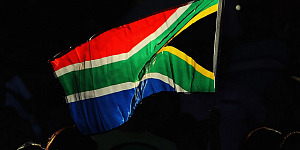South Africa's central bank raised its benchmark repurchase rate by another 50 basis points to 6.75 percent on a further deterioration of the outlook for inflation but said it was "sensitive" to the possible negative impact of its actions on growth and that "future moves will be highly data dependent."
But the South African Reserve Bank (SARB) - which has now raised its rate by 175 basis points since January 2014 and 100 points in the last 12 months - also said that its core mandate is to contain inflation and the constraints facing the country's economic growth "are primarily of a structural nature and cannot be solved solely by monetary policy."
Three members of SARB's monetary policy committee voted for the 50-point rate hike while two members preferred a 25-point hike and one member preferred no change.
Financial markets had expected SARB to raise rates today, with most looking for a 50-point hike.
Despite the rate increase, SARB governor Lesetja Kganyago still considers the policy stance to be accommodative as the real rate is low given the outlook for inflation, which has deteriorated since the MPC's previous meeting in November due to the larger-than-expected depreciation of the rand and the impact on food prices from drought.
"Previously the Committee expressed concerns about the growth risks to the inflation outlook, mainly due to exchange rate and food price risks," Kganyago said, adding "these risks appear to be materializing and have contributed to the significant deterioration of the inflation forecast."
Inflation is now expected to average 6.8 percent this year and 7.0 percent in 2017, up from the previous forecasts of 6.0 and 5.8 percent, respectively. In 2015 inflation averaged 4.6 percent.
"Inflation is still expected to breach the upper end of the target in the first quarter of 2016, but is now expected to remain outside the target for the entire forecast period," Kganyago said, adding inflation is expected to peak at 7.8 percent in the fourth quarter of 2016 and the first quarter of 2017 before easing to 6.2 percent in the last quarter of 2017.
SARB, which targets inflation of 3.0 to 6.0 percent, said the impact on inflation from the lower exchange rate and higher food inflation more than offset the impact of lower oil prices.
The Rand has been on a weakening trend since mid-2011 when it was above 7 to the U.S. dollar. and fell by 25 percent against the U.S. dollar in 2015.
Since the Nov. 19 meeting of the MPC, the rand has depreciated by 13.5 percent against the dollar, with the depreciation exceeding that of most of its emerging market peers. Credit spreads and a rise in bond yields also point to a higher risk premium for South African assets.
In response to the SARB's rate hike, the rand firmed and was trading at 16.2 to the dollar, up from 16.4 yesterday, but still down 4.3 percent since the beginning of the year.
SARB also revised downward its outlook for economic growth, with growth in 2016 expected to average 0.9 percent, down from the previous forecast of 1.5 percent and 2015's estimated average growth of 1.3 percent. In 2017 growth is now seen rising to 1.6 percent, below the previous forecast for 2.1 percent.







































